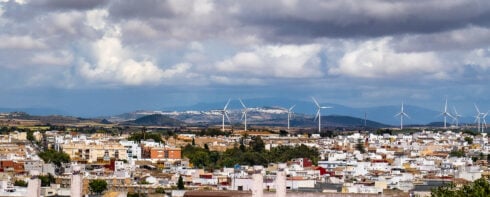MORE than two million homes across Spain are now considered at risk of flooding, more than double the previous estimate – or approximately 8% of the total 25.5 million homes.
This is according to new research carried out by El Diario that is forcing authorities to redraw the nation’s flood maps.
The shock findings reveal that the region most at risk is Murcia, while major cities such as Sevilla, Valencia and Barcelona could also suffer disaster.
In the autonomous region of Murcia, nearly 27% of all properties have been built in flood risk zones – the region with the highest percentage in Spain.
READ MORE: Insurance companies pay out a third of Valencia DANA flood claims so far- totalling €741m

While the city of Sevilla has more than half its homes in vulnerable areas, in Valladolid city the figure is 59% and in El Prat de Llobregat it’s a hefty 65%.
The devastating DANA storm that struck Valencia last October, killing 227 people, has proven a watershed moment in how Spain evaluates flood risks.
The disaster saw unprecedented water flows that exceeded even the most extreme predictions, with the Poyo Ravine recording flows of 2,282 cubic metres per second – nearly double previous estimates.
The new flood risk assessment includes both medium-risk areas (100-year probability) and lower-risk zones (500-year probability), with experts warning that climate change is making historical predictions increasingly unreliable.
After Murcia, the regions with the highest percentage of at-risk homes are Asturias (14.3%), Cantabria (12.9%) and the Basque Country (12.6%).
In absolute numbers, the provinces most affected are Murcia (219,000 homes), Sevilla (210,000), Valencia (175,000) and Barcelona (123,000).
READ MORE: Exclusive: Flood experts warn it’s ’only a matter of time’ before Valencia DANA tragedy is repeated
Jorge Olcina, Professor of Geography and Director of the Climatology Laboratory at the University of Alicante, warned: “Traditional risk assessment methods are becoming less reliable, especially in the Mediterranean, because they are being systematically exceeded.”
The research has also revealed that during Spain’s property bubble between 1997-2008, some 464,000 homes were built in flood-risk areas.
Even more worryingly, 358,000 properties are located in ‘Preferential Flow Zones’ – areas where flooding can be particularly violent and cause severe damage to life and property.
Climate experts are particularly concerned about the Mediterranean coast, where dry riverbeds and ravines can quickly become deadly torrents.
While the frequency of extreme weather events like DANAs may not increase, their intensity is expected to grow.
READ MORE: Watch: Valencia local shows state of her ‘ground zero’ town 30 days after deadly DANA floods
“Just because an area is classified as low-risk doesn’t mean it’s safe,” explained María del Carmen Llasat, Professor of Atmospheric Physics at the University of Barcelona.
“People living in these areas need to know what to do during intense rainfall, such as not trying to retrieve their cars.”
The government is now working on its third cycle of flood risk evaluation, with initial versions due for public consultation in July 2025.
“The DANA has shown the urgent need for deep reflection,” sources at the Ministry of Ecological Transition confirmed.
With climate change making extreme weather events more unpredictable, experts are calling for stricter controls on construction in flood-prone areas.
As Francisco Alonso, director of the University Institute of Water and Environment at the University of Murcia, warned: “Nothing guarantees that tomorrow we won’t see another flooding episode of this magnitude.”








